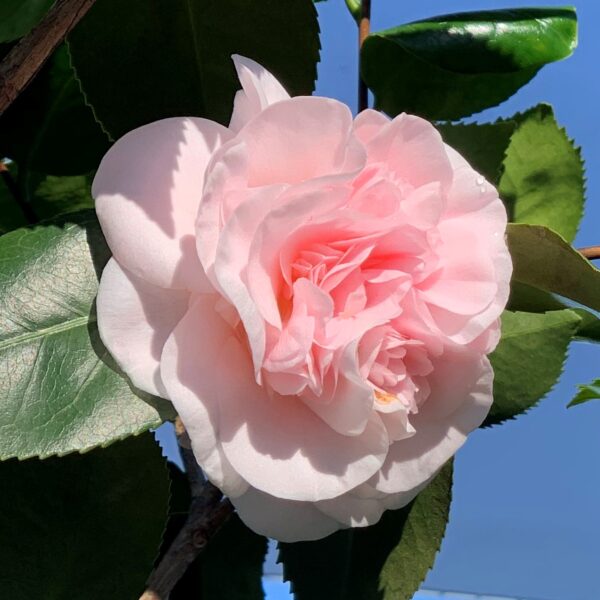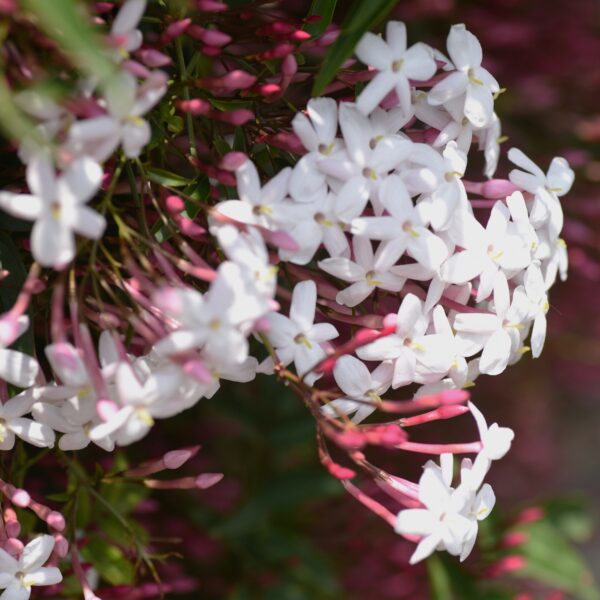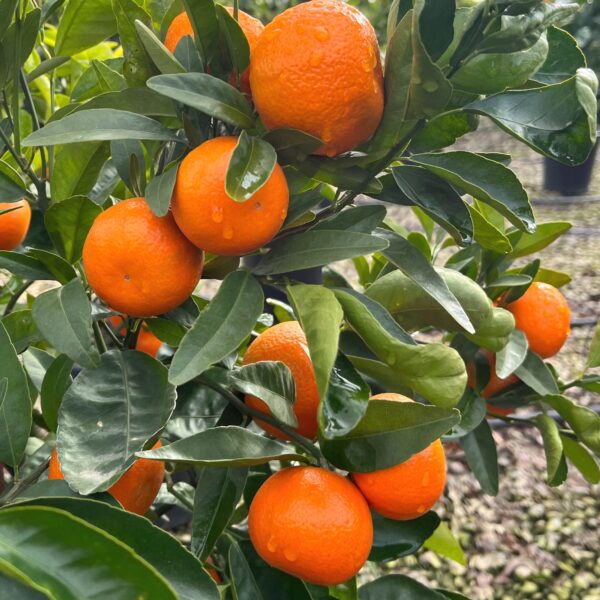Frequently Asked Questions
Uh Oh….check your Spam/Junk folder, sometimes our confirmation emails are sent to the wrong folder depending on your email provider. Check there first, then give us a call or drop us an email. We’re here to help!
We ship our plants out on Mondays, Tuesdays, Wednesdays and Thursdays. So depending on what day you order, you should expect your plant to arrive within 1-2 weeks.
If you wish to cancel or reduce your order please email us right away and we will do our best to accommodate you. If the order has already been processed or shipped we are not able to cancel. If you wish to add to your order it is best to simply place a new order for the additional product.
We understand plans change and are happy to accommodate canceled orders, but there will be a restocking fee for orders that have been pulled from the field and boxed prior to notice of cancellation. We appreciate your understanding.
Each U.S. state has their own regulations about which plants can be shipped across state lines. We understand the frustration of finding the perfect plant and not being able to get it shipped to you (it has happened to us as well). If you have any questions on this subject, please do not hesitate to reach out on our contact form.
The tax is calculated by the specific taxable jurisdiction you live in. Taxes very by state, county, and city. Plants that produce food, (Citrus, Fruit Trees, Etc…) are non-taxable.
We developed a flat shipping rate to make it easier for our customers. We do not use the shipping fee as a way to generate income, it is strictly to cover the cost of getting the product from us to you.
If you are trying to find that last minute gift and want to make sure you package arrives on time, we may be able to help (depending on how last minute it is 
Feel confident in knowing your FRESH PLANT is shipped direct from the grower to your door. If there is an issue with your order feel free to email our team so we can direct your question to our GROW team for input. We want you to feel 100% satisfied with your purchase and we are here to ensure just that!
Less is Best! Providing a deep watering 1-2x a week depending on your USDA growing zone and environment is deal for Citrus trees. We highly recommend purchasing a moisture tester to help gauge when your tree needs its next watering. You can find a water meter or moisture meter at any local garden center or online retailer of your choice.
If you send a request during standard business hours, 8am-3pm PST, you will usually get a response within an hour, and each morning we respond to any inquiries we get after hours.
We can and will do specialty bulk orders on occasion for large orders needing delivery local to our farm. Please reach out on our contact form to discuss further.
Not really. Alder & Oak is a boutique plant retailer, we offer the freshest and finest plants for each season. But we do not offer design tips or services. Feel free to reach out to us with your plant questions though! Please reach out to us to discuss your design needs further.
Yes, we grow all of our plants on our nursery in Central California. We are multi-generation small family farmers.
Each Alder & Oak citrus tree comes with a detailed flyer with planting and care tips for your new tree.
Plants placed in the ground, water thoroughly once a week. For plants placed in a container outdoors, water enough to saturate the soil in the container either once or twice a week. If a potted plant is placed indoors, water enough to saturate the soil in the container and water once a week or less often.
Water conditions change with placement and/or environment. A tool that would assist in the determination of how frequently a plant should be watered is a moisture meter. It measures the moisture at the root level. A moisture meter is inexpensive an available at garden supply stores.
The popular Meyer Lemon is easy to grow, produces a significant amount of fruit and does not require a large amount of heat to ripe its fruit. Compared to Eureka and Lisbon, other commercial varieties, it is slightly sweeter. The Meyer Lemon has a flavor that is described to be a combination of lemon and tangerine.
The Bearss Seedless Lime is perfect ingredient and/or garnish for beverages and cooking.
One reason for yellow foliage is overwatering. Overwatering will cause the root tips to rot. Rotting of the root tips will prevent the root from being able to uptake nutrients. A solution for this would be to cut back on watering. If the problem is not addressed, it will result in complete defoliation.
Another reason for yellow foliage is lack of fertilizer. For Citrus to be productive it requires a constant source of Nitrogen. It is recommended to fertilize regularly according to the label directions with of a quality fertilizer. The ideal ratio for fertilizer is a higher amount of Nitrogen (N) relative to Phosphorus (P) and Potassium (K). The format of the ratio is Nitrogen (N): Phosphorus (P): Potassium (K) with the ratios being 3:1:1 or 4:1:1.
For lemon trees specifically, it is normal to observe yellowing and loss of interior leaves. Lemon trees grow vigorously and benefit from heavy pruning. This will maintain a bushy look due to new branches forming where it was pruned
Our Citrus trees are between 2-3 years old and 30″-36″ tall excluding the can size. They are ready for planting whether you choose to plant it in-ground or in a container.
For a standard citrus tree, it can reach a mature height of 20 to 30 feet tall. It may take 10 to 15 years for the standard tree to reach its full height.
For a semi-dwarf citrus tree, it can reach a mature height of 15 to 20 feet tall depending of the citrus variety.
For a dwarf citrus tree, it can reach a mature height of 6 to 8 feet.
The size of the fruit is the same on all citrus trees.
It is very common for gardeners who live in areas where temps get below 32 degrees to move their plants inside during cold temps. It’s important to scout out the perfect location by finding a South/Southwest facing window, with no draft that receives a minimum of 6 hours of sunlight. Next, you will select a container for your tree that has multiple drain holes at the bottom so remaining water can easily flow through the soil and out of the container. Your soil mix for the container should be organically rich but provide excellent drainage at the same time. We recommend talking to your local garden center about the ideal soil mix. Citrus are heavy feeders and need to be fertilized 3x/year. Its best to find a slow release fertilizer with a ratio of at least 8-4-2. Follow the instructions provided on your fertilizer application.
Citrus thrive in temperatures between 55 degrees and 85 degrees. When temps begin to drop below 40 degrees its time to bring your citrus inside and place in a South or Southwest facing window with no draft. A minimum of 6 hours of sunlight is necessary and grow lights may be needed depending on sunlight exposure.
Our website is just 1 year old, but our nursery and farming practices date back to the late 1970’s. Our family nursery has been supplying the landscape industry with exceptional product for over 40 years and we are THRILLED to be working directly with customers like YOU!
We grow over 600 different varieties of shrubs, trees and edible plant product. Alder & Oak was designed to supply only the finest quality product direct to consumers. Plants have many seasonal changes that come and go throughout the year and when a product is heading into its dormant season or may need a pruning we remove the plant from the site until it meets our quality to be made available again. This means NO second guessing your purchase. NO bareroots EVER and NO plants shipped dormant.
If your area is experience extreme weather during winter and summer months we HIGHLY recommend you leave us a note at checkout and we will gladly care for your plant here on the farm until you feel weather permits us to ship to your area in the U.S. While our goal is to provide top quality plant items for your yard, we can not guarantee replacement of plants shipped to states experiencing extreme heat or cold.
Mid-West & East Coast Gardeners:
You will want to bring your tree(s) indoors to protect them from frost.
- Place your tree in a spot that gets plenty of light (south or southwest facing window). Do not put your tree near a drafty vent or hot fireplace. A place in your house or garage that stays between 55-58 degrees is ideal. This temperature range mimics early-spring temperatures and will encourage flowering. Citrus trees require a minimum of 6 hours sunlight daily, if this isn’t possible you can supplement by using grow-lights made specially for plants.
- Water your tree less during the winter months, it will only need water when the soil is dry to the touch. About 1/2 gallon weekly.
West Coast Gardeners:
You may choose to bring your tree(s) indoors or leave it outdoors.
- In most of the warmer parts of the West Coast, a light frost cover will do fine when temps get close to freezing at night.
- Water your tree deeply before each frost to protect the roots. Moist soil is less likely to freeze. Give your tree up to 1-2 gallons of water weekly from Nov-Feb if you aren’t getting much rainfall.
- We recommend a frost cloth to cover your tree if temperatures are expected to dip below 32 degrees. Choose the best cloth weight/thickness for your area’s needs. Cover the tree to the soil and leave in place until your last frost date has passed.



